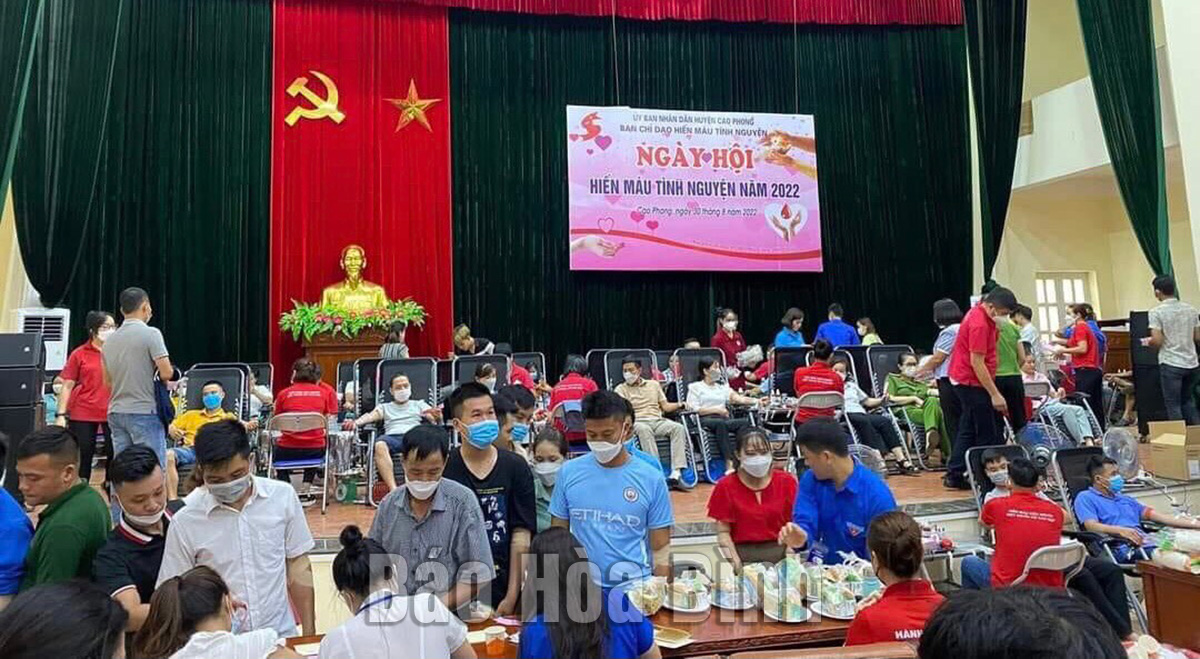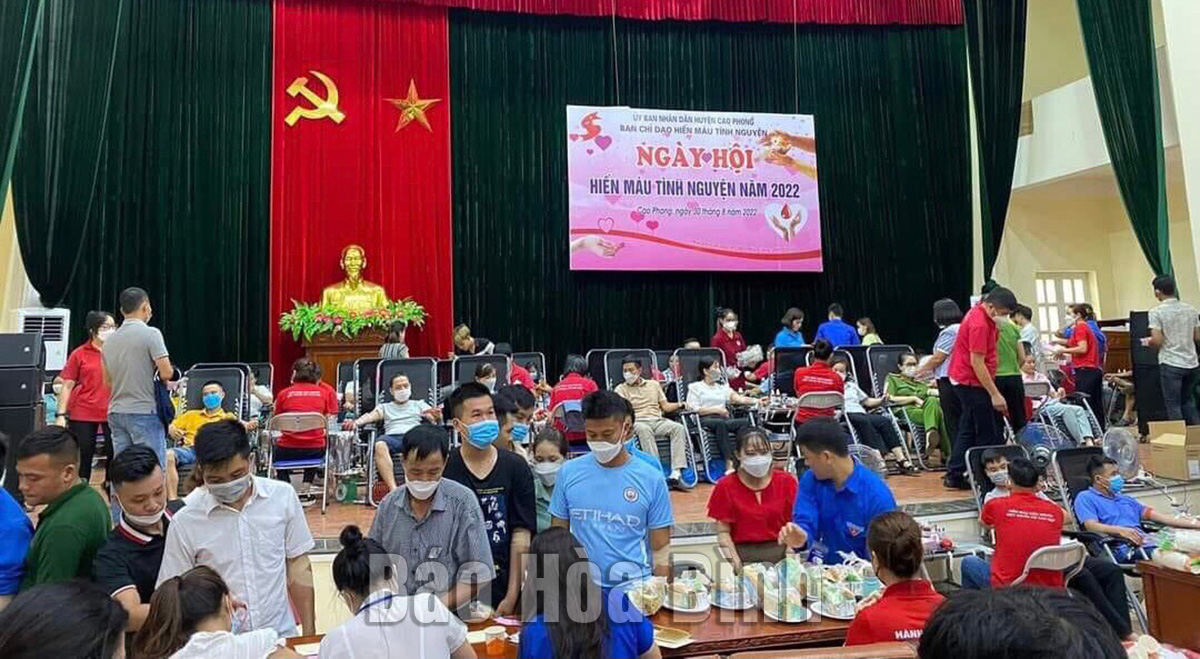
(HBO) - In recent years, the voluntary blood donation work in Cao Phong district of Hoa Binh province has received enthusiastic response from officials, party members, and people from all walks of life.
In
2022, Cao Phong recorded 870 participants in voluntary blood donation drives,
resulting in the collection of 573 blood units.
Bui Van Chung, Secretary of the Ho Chi Minh Communist Youth Union (HCYU) of
Thach Yen commune, has donated his blood 13 times so far since 2007 when he was
a student. He has also actively encouraged local youth union members and his
relatives to participate in voluntary blood donation programmes. For him,
donating blood to save lives is a noble humanitarian act of young people.
He said: "After donating blood, I still maintain normal health and learning
activities. I feel that I have done something useful for the community and
society. Therefore, I regularly participate in voluntary blood donation, and
there were times when I donated twice a year.
As for Pham Thi Phuong from Bang street in Tay Phong commune, although she has
passed the age of 50 and has participated in blood donation 10 times
continuously, she is still healthy and full of vitality.
Phuong confided that in 2011, when she was taking care of a family member at
hospital, she witnessed many patients exhausted waiting for blood donations
from the community to sustain their lives.
"I decided to undergo a blood donation procedure right at the hospital. If my
health allows, I will continue to participate. I simply think that donating
blood to save lives is a noble and compassionate act between people.”
Cao Phong has attracted 6,527 people to register for voluntary blood donations
between 2012 and 2022, resulting in 4,323 blood units collected.
Bui Anh Tuan, Vice Chairman of the Cao Phong People's Committee and Head of the
district’s Steering Committee for Voluntary Blood Donation, stated that through
communications in various forms, public awareness on the matter has been raised
significantly. Each year, the number of voluntary blood donors has increased by
10 - 15%. In 2012, the district recorded 243 donors and collected 179 blood
units, with the numbers rising to 870 and 573 in 2022, respectively./.
The emulation movement "Hoa Binh joining hands to build new-style rural areas” has been widely spreading, becoming a driving force that motivates the localities to renew rural landscapes and improve the material and spiritual lives of the residents. In this movement, the people play a central role-both as the main implementers and direct beneficiaries of its outcomes.
In response to the global digital revolution, Hoa Binh Newspaper is transforming itself into a modern and multi-platform media hub, blending cutting-edge technology with a restructured newsroom and a new generation of tech-savvy journalists.
Hoa Binh province’s Association of the Elderly recently held a conference to review the project on expanding the inter-generation self-help club model until 2025.
In a move to implement Resolution No. 57-NQ/TW, issued on December 22, 2024 by the Politburo, which targets breakthroughs in science-technology development, innovation, and digital transformation, the Hoa Binh provincial Department of Health has issued a plan to roll out the "Digital Literacy for All” campaign within the local health sector.
An Nghia Commune (Lạc Sơn District) is one of the communes that achieved the tha standard of the national new rural area in 2018. Entering a new development phase, the commune is now trying to meet the criteria for the advanced new rural development. With the strong political will and the public consensus, the commune is gradually overcoming the challenges to reach this goal, aiming for the sustainable development.



